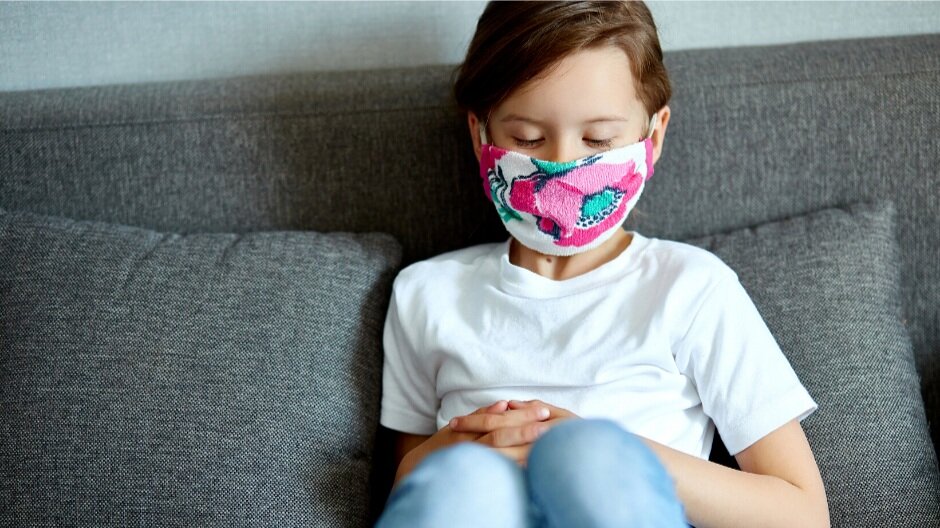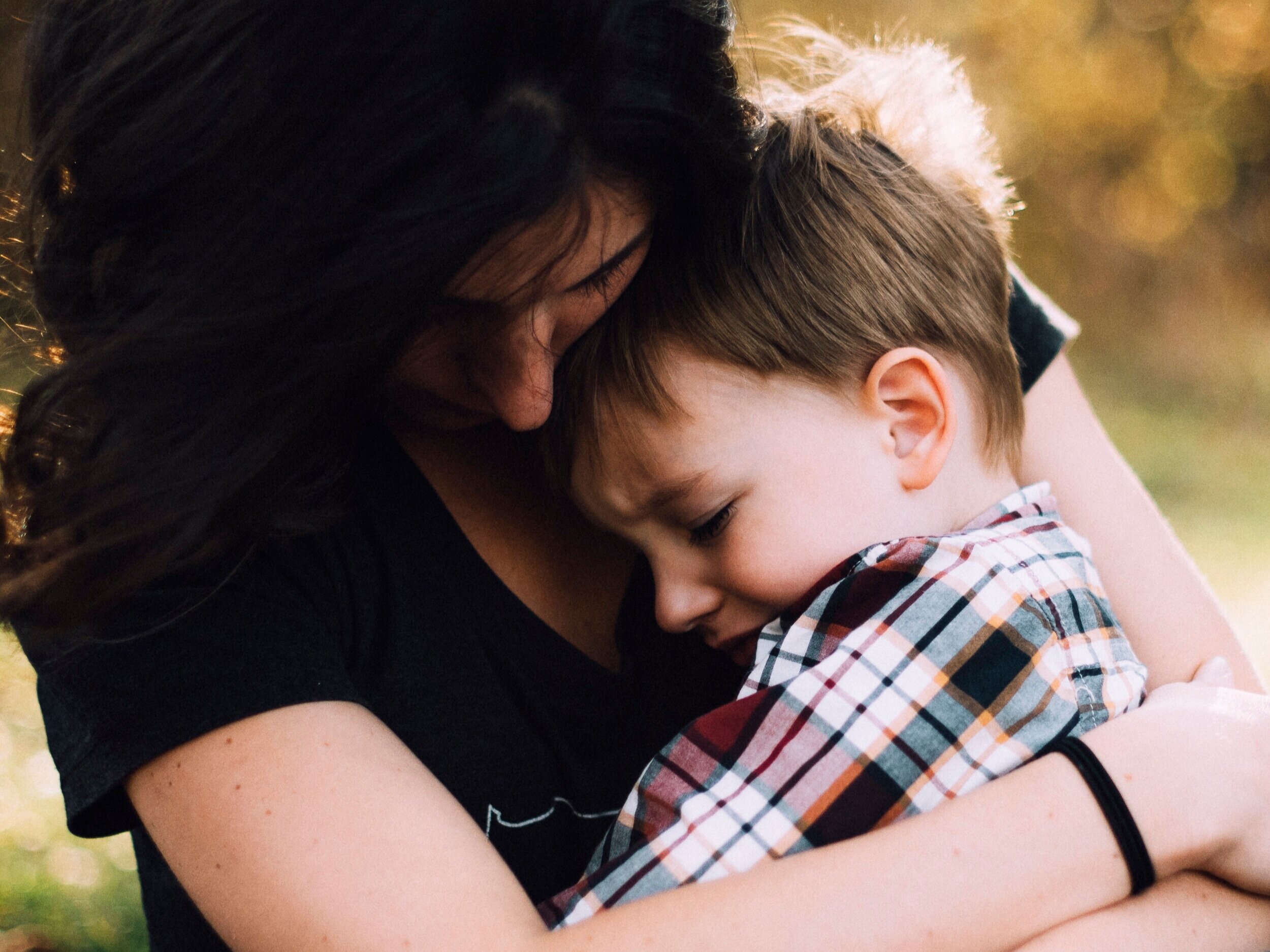
Hello friends – welcome! For those of you who are new to our village, I’m Dr. Amy – I’m a licensed psychologist, consultant and trainer. I specialize in helping professionals and parents recognize stress and trauma in children and foster resilience-building skills to decrease long-term effects for children.
And, before I get started today, let me be sure to invite you to my new, private FB group – you can find out all about it here. We’re creating a village of parents who want more than traditional parenting advice from a supportive community of parents and a realistic, practical expert.
We are currently creating huge amounts of stress for children by not talking to them about COVID, mask-wearing, social distancing and other important health behaviors. So, hang in here with me as I half rant/half educate on what we should be doing to protect children right now.
This past weekend was a holiday and we’re moving full-swing into summer months. I know that right now, our nation’s COVID rates are at a dramatic height. So, wear your masks! It’s not hard! It takes 2 seconds and can save lives. This, in no way, is an anti-mask message. At the same time, I think we can be responsible about COVID but not continue to stress out our kids and traumatize them – and when I say kids, I’m referring to little people under the age of 15.
With sunny skies and BBQ’s for weeks to come, I wanted to message everyone about ways to be safe, but not hurt children.
None of the preventative measures we need to take for health and safety are developmentally appropriate for kids – that’s why older kids are balking at this – they don’t understand their role and we’ve used fear tactics vs. compassion and conversation to understand what’s going on. With younger kids, we’re scaring them without conversations and understanding. In Oregon, there was a commercial that highlighted “Don’t Kill Grandma” by hugging her. Can you imagine how that child must feel? What if grandma actually died? Geez! At the grocery store, I see moms (understandably frightened as COVID rates spike) yell at their kids at the grocery store “don’t touch that” “stay away from people” – kids look terrified. So, I’m going to talk about some ways to alleviate this stress.
Get educated! Stop listening to your neighbor or your FB friend or your buddy from work about his/her opinion on COVID – masks save lives, being outdoors is better than being indoors and if you can’t keep socially distanced, then being with just the people you live with is the most safe. So, if you’re thinking about a get-togethers and BBQ’s this summer, think outdoors, think wide spaces. Or think about staying home.
Begin to have tough conversations with people with whom you’re socializing. I’ve talked with families for months now about the intersection of risk and comfort. If you’re going places, getting together for small gatherings, etc, you’ve already accepted some risk. At that point, decide what would make you feel most comfortable while taking the risk. For example, at our family BBQ this past weekend, we had two families over for the holiday. This means accepting some risk. What we did to be most comfortable with the risk was to clearly communicate expectations.
For example, it was ok with us for people to come over as long as they stayed outside. People brought their own chairs. Food was kept outside. Hand sanitizer was put out when shared utensils were being used. The only reason people entered our home (except for the people that live here) were to use the restroom. And then, the quickest route to the restroom was made and wipes were made available to wipe down the faucet, sink and door knobs on guests’ way out.
While this might sound laborious, it allowed us to be clear and comfortable while taking some risk with the benefit of socialization and community. So, have the tough conversations.
Include kids in conversations about the “why”. For younger kids, instead of terrifying them, talk to them about how germs spread and why we’re taking preventative measures.
-
Let them know it keeps everyone safe. Allow them to make their own masks, decorate them, wear costume masks or sunglasses too. Know that some of these necessary procedures are embarrassing and strange for kids.
-
Let them know it’s ok to ask questions and that we all look funny right now.
-
Let your kids know what IS ok – it’s ok to hug mommy; but it’s not ok to hug grandma right now until we wash our hands; or we can talk to grammy through a window or in the backyard. We can send her love notes, poems, talk to her on facetime. We can make meals for her.
Constantly focusing on what kids “can’t” do is not helping. Kids are supposed to be social. They’re supposed to hug, play next to, run in gaggles, and clump together – we’re asking them to do what is NOT developmentally appropriate. So, for goodness sake, instead of shaming them or terrifying them – none of which has a health policy history of working…..instead, have conversations with them. Let them know that we’re being extra cautious right now because these germs are sneaky and invisible.
The same is true for older kids. For goodness sake, if you have an 18-25 year old who’s acting selfish and you’re judging them and shaming them; instead, try having a conversation with them:
-
“Talk to me about your behavior and why you feel like this is safe?”
-
“Are you aware of the dangers?”
-
“If you’re going to be out and about, how can you limit exposure to others?”
This population of young people are supposed to be invincible and autonomous – it’s developmentally appropriate for them to be. So, instead of asking them to NOT do what is normal; instead, ask them thoughtful questions and encourage them to self-reflect.
So, those thoughts come down to 5 practical strategies:
-
Know what’s developmentally appropriate for kids. If you’re not sure, ask someone like me, your pediatrician, or a teacher. But please, stop asking google and FB friends unless they’re a physician, educators or mental health expert.
-
Educate yourself about what’s appropriate right now to keep kids and families safe. We have to provide socialization without shame in ways that address needs for kids to be social, but still keep them safe.
-
Have conversations about the intersection of comfort and risk with anyone you’re going to spend time with – and if you can’t have that conversation, you probably shouldn’t spend time with them.
-
Include kids in conversations that focus on what they can do vs. what they can’t.
-
Encourage empowerment and socialization in healthy ways vs. shame and terror.
That’s it.
Wear your masks. Have conversations and STOP terrifying children.
Dr. Amy
PS – if you haven’t joined my free, private FB group, do it now! I can’t wait to have you join these discussions. Click here to join!
